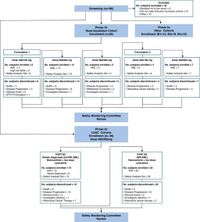In the ongoing battle against acute myeloid leukemia (AML), researchers are exploring innovative treatment strategies to provide hope for patients with relapsed or refractory (R/R) forms of the disease. A recent clinical trial has investigated the efficacy of bemcentinib, an oral AXL inhibitor, alone and in combination with low-dose cytarabine (LDAC) for patients deemed unfit for intensive chemotherapy.
Conducted by BerGenBio, this Phase 1/2b trial (NCT02488408) highlighted the challenges faced by older adults diagnosed with AML, particularly those over the age of 65 who may not respond effectively to standard chemotherapy regimens. With a median age of 74.5 years among participants in the dosage escalation cohort, the study aimed to find viable treatment alternatives for this vulnerable population.
Bemcentinib is a targeted therapy designed to inhibit the AXL receptor tyrosine kinase, which is associated with poor prognosis, increased therapy resistance, and an immunosuppressive tumor microenvironment. The primary goal for bemcentinib when used as monotherapy was to identify the maximum tolerated dose and assess safety and tolerability through clinical laboratory tests and established adverse event criteria.
Among the 36 patients enrolled in the dose escalation cohort, the results showed a modest overall response rate (ORR) of 14%, including complete remission and partial responses. Notably, in patients treated with bemcentinib in combination with LDAC, the ORR significantly improved to 50% for treatment-naïve individuals and 20% for R/R patients, underlining the potential of this combination regimen.
One patient in the treatment-naïve group achieved a complete response alongside one partial response, while other R/R patients reported various degrees of response to treatment. The median time to objective response was recorded at 85 days, with a median overall survival (mOS) of 16.1 months for treatment-naïve patients and 7.8 months for those with R/R AML.
Researchers found bemcentinib's pharmacokinetic profile to be favorable, with mean maximum concentration (Cmax) values showing dose-related escalation. Importantly, the drug demonstrated a half-life of approximately 124 to 159 hours, making it suitable for administration both as monotherapy as well as in combination with LDAC.
The findings indicate that bemcentinib in combination with LDAC has a manageable safety profile, with the most frequent grade 3 and 4 adverse events being cytopenia and QTc prolongation. However, it is crucial to note that no grade 5 events were reported, suggesting a relatively safe profile for elderly patients who typically face significant treatment challenges.
Furthermore, the pharmacodynamic assessments of bemcentinib provided insights into the drug's effectiveness in inhibiting AXL signaling in patient samples. This inhibition occurred rapidly after treatment initiation, highlighting the potential for quickly responding therapeutic interventions in this patient population.
As the study concludes, researchers have emphasized the need for more extensive trials examining the combination of bemcentinib and LDAC, as well as exploring further combinations with other targeted therapies for a comprehensive approach to AML. The promising outcomes from this trial highlight a potential avenue to improve the prognosis for elderly patients grappling with this aggressive form of cancer.




